|

by Aaron Brown
May 11, 2015
from
Express Website
Spanish version
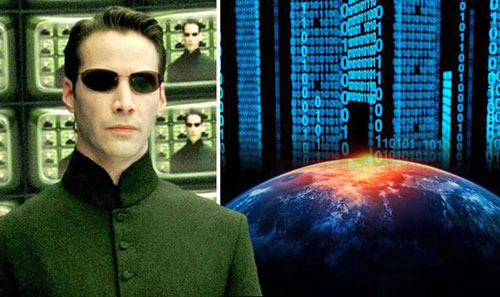
WELCOME to The Matrix.
You've lived here all your
life.
Everything you have ever
done or will do
could simply be the product of
a highly-advanced computer
code.
Every relationship, every sentiment,
every memory could have been
generated
by banks of supercomputers.
This was the terrifying theory first proposed by British philosopher
Nick Bostrom.
The shocking hypothesis was penned four years after Andrew
and Lana Wachowski wrote and directed
The Matrix, a film set in a dystopian future in which
humans are subdued by a simulated reality.
In his paper, Dr Bostrom suggested a race of far-evolved descendants
could be behind our digital imprisonment. The futuristic beings -
human or otherwise - could be using virtual reality to simulate a
time in the past or recreate how their remote ancestors lived.
Sound crazy?
Well, it turns out NASA thinks Dr
Bostrom might be right...

The Standard Model of
Physics
does not yet hold an
explanation for the force of gravity
Rich Terrile, director of the Centre for Evolutionary
Computation and Automated Design at NASA's Jet Propulsion
Laboratory, has spoken out about the digital simulation.
"Right now the fastest NASA
supercomputers are cranking away at about double the speed of
the human brain," the NASA scientist
told Vice.
"If you make a simple calculation using Moore's Law [which
roughly claims computers double in power every two years],
you'll find that these supercomputers, inside of a decade, will
have the ability to compute an entire human lifetime of 80 years
- including every thought ever conceived during that lifetime -
in the span of a month.
"In quantum mechanics, particles do not have a definite state
unless they're being observed. Many theorists have spent a lot
of time trying to figure out how you explain this.
"One explanation is that we're living within a simulation,
seeing what we need to see when we need to see it.
"What I find inspiring is that, even if we are in a simulation
or many orders of magnitude down in levels of simulation,
somewhere along the line something escaped the primordial ooze
to become us and to result in simulations that made us - and
that's cool."
The idea that our Universe is a
fiction generated by computer code solves a number of
inconsistencies and mysteries about
the Cosmos.
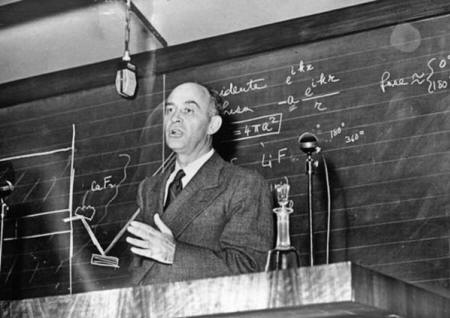
Professor Fermi known
for achieving
the first controlled
nuclear reaction, leads a lecture
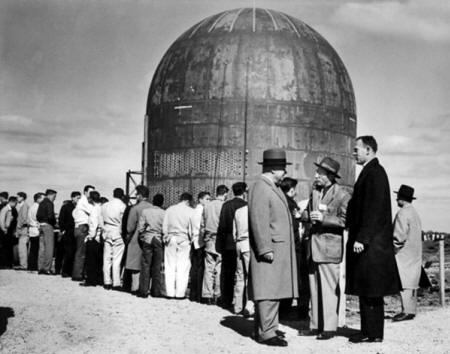
Enrico Fermi outside
an
atomic energy plant
in Newport in October 1957
The first is the
Fermi Paradox - proposed by
physicist Enrico Fermi during the 1960s - which highlights
the contradiction between the apparent high probability of
extraterrestrial civilizations
within our ever-expanding universe and humanity's lack of
contact with, or lack of evidence for, these alien colonies.
"Where is everybody?" Mr Fermi
asked.
It could simply be that Earth and
mankind truly is the 'centre' of the universe.
Another mystery explained by Dr Bostrom's Matrix-like theory is the
role of Dark Matter. US theoretical cosmologist Michael Turner
has called the hypothetical material,
"the most profound mystery in all of
science".
Dark Matter is one of many
hypothetical materials used to explain a number of anomalies in the
Standard Model - the
all-encompassing theory science has used to explain the particles
and forces of nature for the last 50 years.
The Standard Model of particle physics tells us that there
are 17 fundamental particles which make up atomic matter.
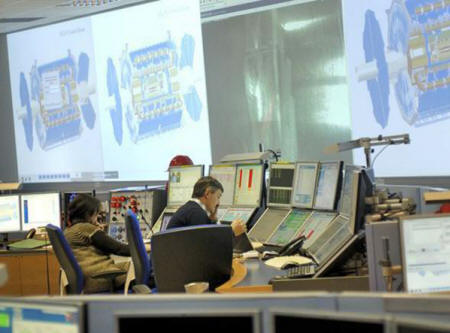
A scientist works
within the ATLAS control room,
part of the Large
Hadron Collider facility
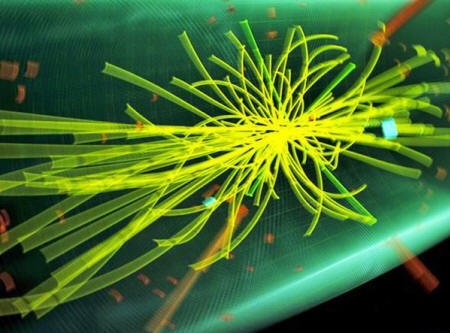
Scientists hope to
prove the existence
of Dark Matter within
the CERN accelerator
The Higgs Boson, which was first
theorized by scientists during the 1960s, is amongst these 17
fundamental particles.
In summer 2012, scientists at CERN observed what is now believed to
be the elusive "God
particle". But the Standard Model is as-yet unable to
explain a number of baffling properties of the universe - including
the fact that the universe is expanding at an ever-increasing speed.
Dark Matter is believed to be a web-like matter that binds visible
matter together.
If it exists, it would explain why galaxies spin at the speed they
do - something which remains unexplained based only on what we can
currently observe. The Standard Model does not yet hold an
explanation for the force of gravity.
The as-yet unproven existence of Dark Matter could be explained by a
virtual universe. But not everybody is convinced about
The Matrix explanation.
Professor Peter Millican, who teaches philosophy and computer
science at Oxford University, thinks the virtual reality explanation
is flawed.
"The theory seems to be based on the
assumption that 'superminds' would do things in much the same
way as we would do them," he said.
"If they think this world is a simulation, then why do they
think the superminds - who are outside the simulation - would be
constrained by the same sorts of thoughts and methods that we
are?
"They assume that the ultimate structure of a real world can't
be grid like, and also that the superminds would have to
implement a virtual world using grids.
"We can't conclude that a grid structure is evidence of a
pretend reality just because our ways of implementing a pretend
reality involve a grid."
Professor Millican does believe there is
worth in investigating the idea.
"It is an interesting idea, and it's
healthy to have some crazy ideas," he told The Telegraph.
"You don't want to censor ideas according to whether they seem
sensible or not because sometimes important new advances will
seem crazy to start with.
"You never know when good ideas may come from thinking outside
the box.
"This Matrix thought-experiment is actually a bit like some
ideas of Descartes and Berkeley, hundreds of years ago.
“Even if there turns out to be nothing in it, the fact that you
have got into the habit of thinking crazy things could mean that
at some point you are going to think of something that initially
may seem rather way out, but turns out not to be crazy at all."
|







